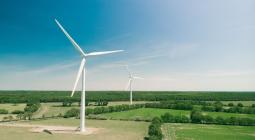Open Goals: Taking SDG investing to the next level?

The latest Gates Foundation annual assessment of global progress toward the UN Sustainable Development Goals (SDGs) is less than encouraging. According to Bill Gates, the goals are still far out of reach, as he lamented the world is “nowhere near improving fast enough” to meet them. The same could be said for investors—when it comes to addressing SDGs in their investments, there’s still much progress to be made.
One can hardly blame investors for lack of good intention. Adoption of ESG strategies has been on the rise over the past decade, and many investors who are already applying ESG considerations still believe they could be making a greater impact through their investments.
The SDGs might appear the logical next step for these investors looking to take ESG to the next level, as they lay out 17 global goals spanning environmental, social and development issues—representing the closest we have to a global sustainability strategy. The SDGs can offer the framework for identifying many of the issues that really matter to employees, stakeholders, companies, and investors alike. The goals can also bring a sharper focus to climate, gender, employment and job creation, urbanization, and importantly the role of financial markets in sustainable global growth and development.
However, there are several reasons why SDG adoption in investment strategies hasn’t been more widespread. For one, the SDGs are by design mostly targeted at governments, making it difficult for investors to determine how to go about applying them to investments. There’s also the question as to how they should best be used—are they a measurement tool for impact investors? A framework for identifying areas for shareholder engagement? Or a tool for identifying future investment risks to global portfolios?
These are the questions that characterize the early stages of SDG adoption in investment strategies. And should investor SDG adoption continue to grow, there’s a good chance the ultimate answer is the SDGs will be suited for all of these uses. Because just as a broad range of tools, indexes and investment products has been developed to support the rise of ESG integration, the same will likely be done to support SDG adoption. An initial challenge is the ability to obtain meaningful company level data related to specific SDGs, in particular when you are working with a large global universe. However, new techniques for collecting and processing large amounts of data – both company reported, and data from other public sources – are providing exciting opportunities to clear this hurdle.
These early innings of SDG adoption are also characterized by varying approaches. To date, many of those looking to adopt SDGs are impact investors seeking a measurable impact or outcome in relation to specific SDGs. At FTSE Russell, large institutional investors have sought a different approach, asking us to create custom indexes applying the SDG framework to both broad market equity and debt portfolios. This approach of aligning a passive portfolio with the SDGs focuses on identifying overlaps between the goals and existing ways of assessing corporate sustainability practices e.g. using a mixture of company ESG scores, data on revenues from sustainable products and services (e.g. green revenue data) and product level exclusions data.
We drew on nearly two decades of experience constructing indexes that integrate ESG considerations in order to come up with a simple approach. Our objective is to shift capital towards companies demonstrating greater progress on a range of sustainability issues that are aligned with the SDGs e.g. labor relations, human rights, climate change, anti-corruption and biodiversity. Behind this objective is a belief that a more sustainable global economy is one of a number of necessary conditions required to fulfil the SDGs.
While still in its nascent stage, the future for SDG-aligned indexes looks promising. Indexes and benchmarks that capture sustainability considerations can help push us toward a more sustainable global economy by encouraging better corporate ESG practices and disclosures. Indeed, the growth in investor allocations to investment strategies linked to social and environmental objectives – many of which will be aligned to the SDGs – has been spectacular. Data collected by the Global Sustainable Investment Alliance shows that in 2018, global assets in ‘sustainability themed’ and ‘impact’ strategies reached approximately $1.5 trillion, up from around $500 billion in 2016. Ultimately, if enough money moves into these types of strategies, then investors can indeed have a material impact—as this rising tide could lift all boats across an entire market.
To learn more about FTSE Russell click here.
8 June 2020
Climate Action





